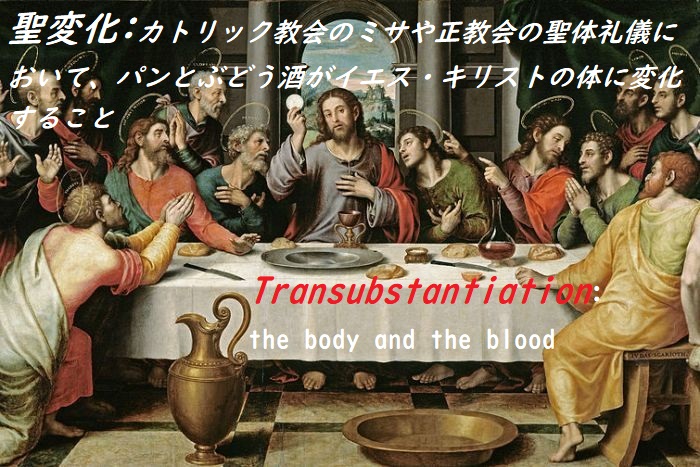
魂と肉体は,スコラ哲学 -それはいまだ力トリック教会の哲学であるが- においてはともに「実体(substances)」である。「実体」(substance)は統語論(syntax 統語論,構文論)に由来する観念(概念)であり,また,統語論(構文論)は,我々の言語構造を決定した(決定づけた)原始民族の多少とも無意識的な形而上学に由来している(導き出されている)。文は主語と述語に分析され(分けられ),また,主語あるいは述語として出てくる(使用される)語がある一方,-あまり明確でない理由で- 主語としてしか出てこない(使用されない)語が存在している。これらの言葉は - 固有名詞がその最もよい例であるが ー 「実体」を指し示すと想定される。それ(実体)と同一の観念を表わす普通の(よく使われる)言葉は「事物」-人間(存在)に適用される場合には「人格(person)」である。実体という形而上学的概念は,ものやひと(という言葉)によって常識が意味することに,正確さを与えようとする試みにすぎない。 例をあげてみよう。我々は「ソクラテスは賢明である」「ソクラテスはギリシア人である」「ソクラテスはプラトンを教えた」等々と言う。これらの全ての陳述(文)において,我々は(それぞれ)異なった属性をソクラテスに帰属させる(与える)。「ソクラテス」という言葉は,これら全ての陳述(文章)において厳密に同一の意味を持っている。そうして,ソクラテスという人間は彼の(諸)属性とは異なったあるもの,(また)それらの属性が「具わっている(inhere)」と言われるあるものである(ということになる)。自然に関する知識(natural knowledge)は,我々が事物をその属性によって認識できるようするのみである。(即ち)もしソクラテスが厳密に同じ属性を持った双児(の子供)を持っていたなら,我々は両者を区別できないであろう。にもかかわらず,(一つの)実体とは,その実体が有している諸属性を合計したものではないあるものである(訳注:/属性の総体=そのものの実体、ではないということ/どういうわけか,荒地出版社刊の津田訳にはこの一文が訳出されていない! 次の一文を理解するのに重要な一文なのに・・・?)。このことは, 聖餐(せいさん)(注:Eucharist 「聖体の秘跡」とも言われる。イエス・キリストの最後の晩餐(イエスはパンを取り「これが私の体である」といい、杯をとり「これが私の血である」といって弟子たちに与えた)に由来するキリスト教の儀式)をみれば最も明らかである。聖変化(注:transubstantiation カトリック教会のミサや正教会の聖体礼儀においてパンとぶどう酒がイエス・キリストの体に変化すること)において,パンの属性は残るが,その実体はキリストの肉体となる(注:つまり属性=実体ではない,ということ)。近世哲学の勃興期(初期),デカルトからライブッツに至る革新者は全て(スピノザを除いて),彼らの学説が(キリスト教の)聖変化と両立することを証明するために大きな努力を払った。教会当局(キリスト教会の権威者たち)は長い間躊躇したが,ついに,スコラ哲学のみが健全であることを決定した。
Chapter V Soul and Body, n.4 Soul and body, in the scholastic philosophy (which is still that of Rome), are both substances. “Substance” is a notion derived from syntax, and syntax is derived from the more or less unconscious metaphysic of the primitive races who determined the structure of our languages. Sentences are analysed into subject and predicate, and it is thought that, while some words may occur either as subject or as predicate, there are others which (in some not very obvious sense) can only occur as subjects ; these words – of which proper names are the best example – are supposed to denote “substances.” The popular word for the same idea is “thing” – or “person,” when applied to human beings. The metaphysical conception of substance is only an attempt to give precision to what common sense means by a thing or a person. Let us take an example. We may say “Socrates was wise,” “Socrates was Greek,” “Socrates taught Plato,” and so on ; in all these statements, we attribute different attributes to Socrates, The word “Socrates” has exactly the same meaning in all these sentences ; the man Socrates is thus something different from his attributes, something in which the attributes are said to “inhere.” Natural knowledge only enables us to recognize a thing by its attributes ; if Socrates had a twin with exactly the same attributes, we should not be able to tell them apart. Nevertheless a substance is something other than the sum of its attributes. This appears most clearly from the doctrine of the Eucharist. In transubstantiation, the attributes of the bread remain, but the substance becomes that of the Body of Christ. In the period of the rise of modern philosophy, all the innovators from Descartes to Leibnitz (except Spinoza) took great pains to prove that their doctrines were consistent with transubstantiation ; the authorities hesitated for a long time, but finally decided that safety was only to be found in scholasticism.
出典:Religion and Science, 1935, chapt. 5:
情報源:https://russell-j.com/beginner/RS1935_05-040.HTM
